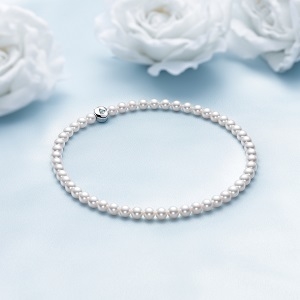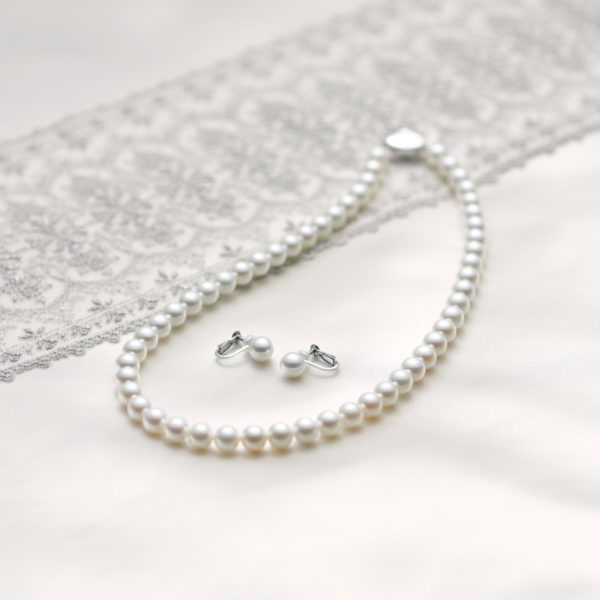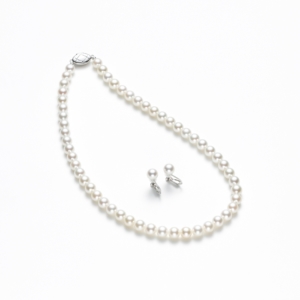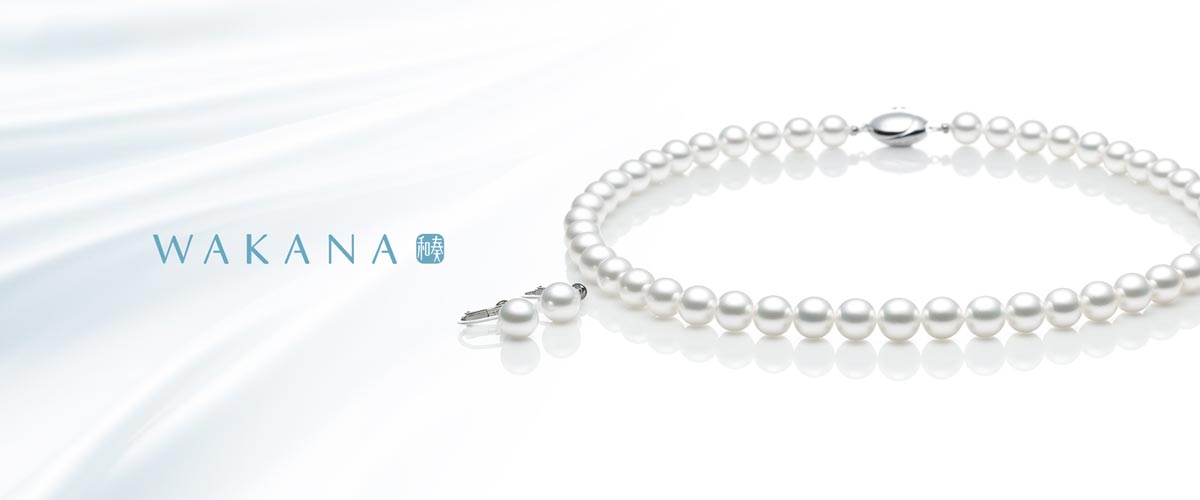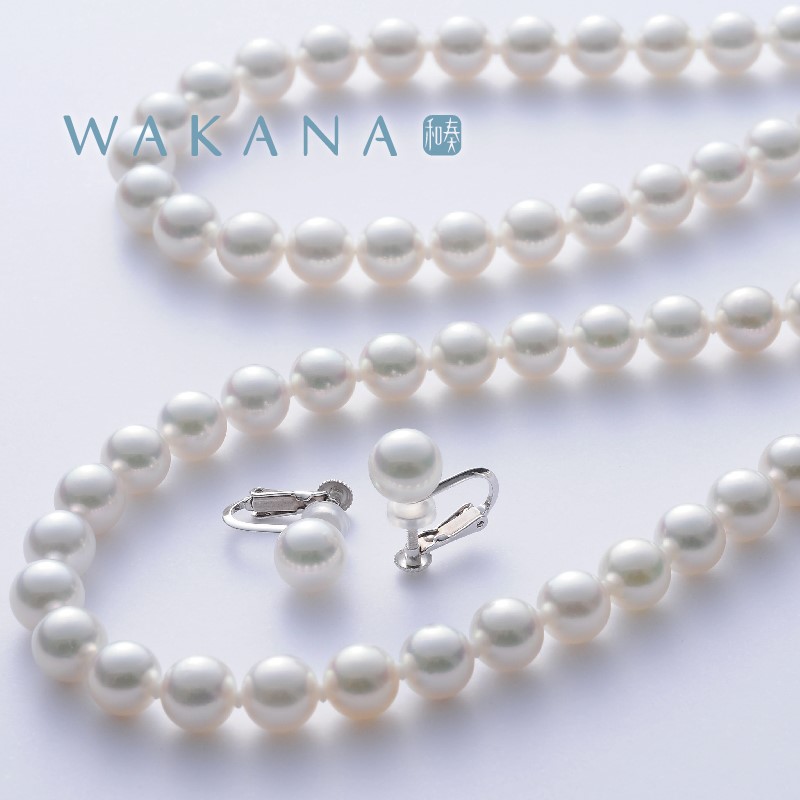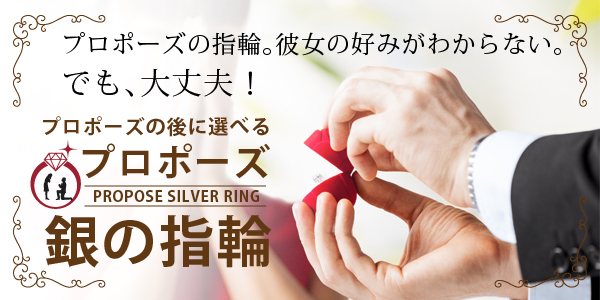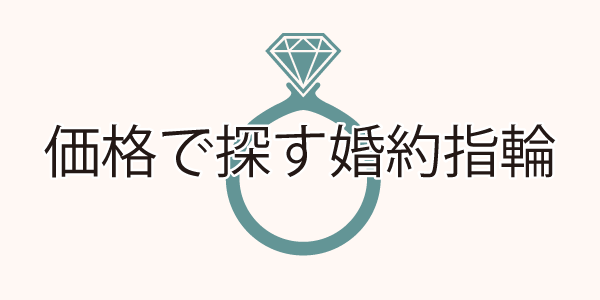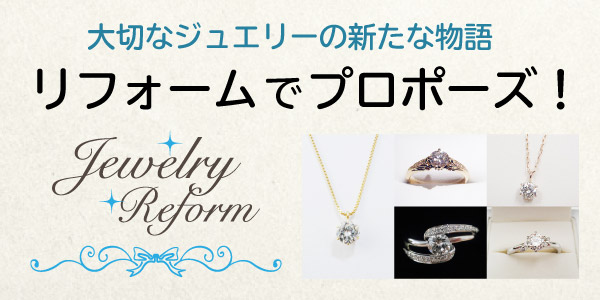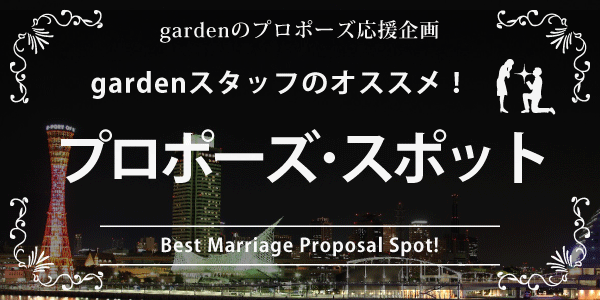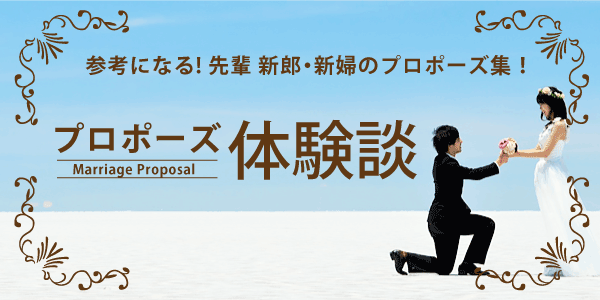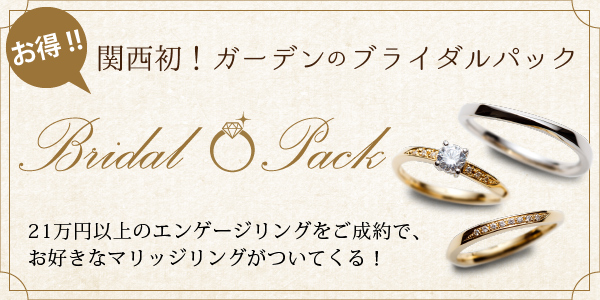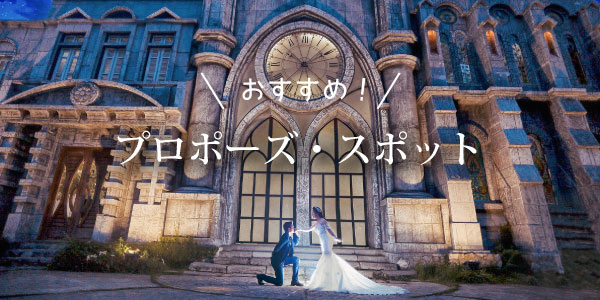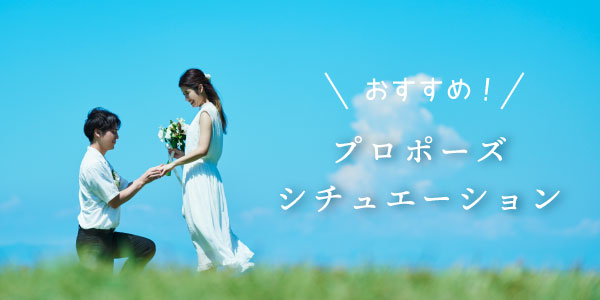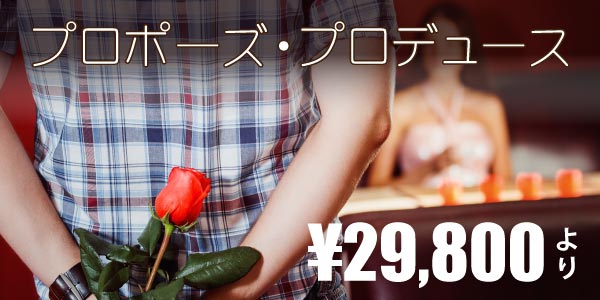Pearl necklace special feature|kobe sannomiya
Find for pearl necklaces in Kobe city
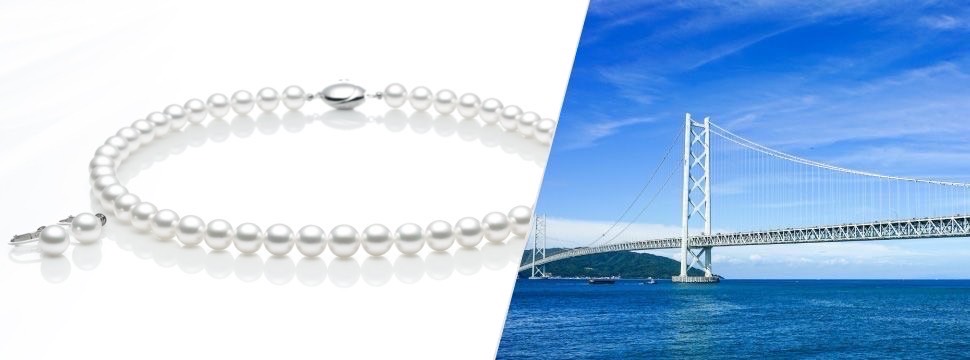
Do you own a pearl necklace? A Pearl necklace is essential for formal occasions such as weddings and funerals. A pearl necklace is a must-have item for adult women. Why not give a high-quality pearl necklace as a 20th birthday gift or one of the wedding item? “Garden Kobe Sannomiya” is one of the largest bridal jewelry stores in Hyogo. We offers not only “Hanadama” pearl necklaces but also other recommended high-quality pearl necklaces. We will introduce you to some pearl necklaces that are easy to wear everyday or recommended as a gift for your daughter and granddaughter. If you are looking for a pearl necklace in Kobe, come to Garden Kobe Sannomiya!
Pearl necklace trivia
・Pearl necklace for funeral
Generally, pearl necklaces are the only jewelry allowed at funerals. Pearls are called “Mermaids’ tears” and have been considered to represent feelings of sadness. Funerals have many customs and manners for long time. In addition to Akoya pearl necklaces (white, gray, green), Tahitian black pearl necklaces and South Sea white pearl necklaces are also recommended. Single-strand pearl necklaces and pearl earrings are fine, but double-strand pearl necklaces are taboo because they signify “overlap” funerals. The length of the pearl necklace should be above the chest, no longer than about 60 cm. Also, pearl rings should be simple and avoid ones with large diamonds. Manners are the expression of the feeling of “caring about the people around you”. If the deceased is a relative or there are many people attending the funeral who respect customs, it’s safe to only wear Akoya pearl necklaces (white, gray, green).
・Pearl necklace for weddings and receptions
For daytime parties, keep your jewelry understated. We recommend pearl necklaces such as white Akoya pearl necklaces and multi-colored pearl necklaces. For evening parties, jewelry with a strong shine is fine. We also recommend long pearl necklaces and layering with diamond pendants. Also, add some glamour to the party with large pearl earrings and rings.
→→You can see Google reviews of garden Kobe Sannomiya here←←
How to choose a pearl necklace in Kobe
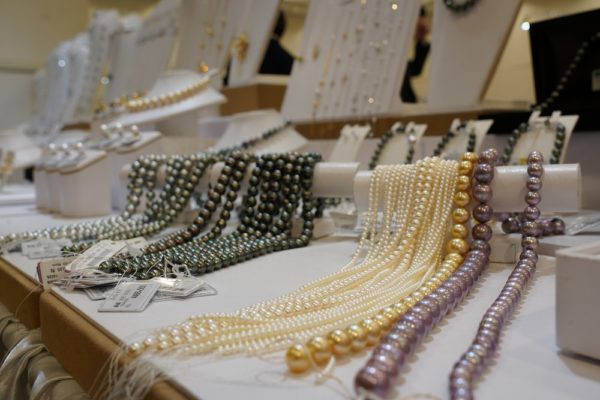
①The luster of pearls
Luster refers to the shine (brilliance) of a pearl. This varies depending on the uniformity of the nacre and the smoothness of the surface. In other words, the smoother the surface and the thicker the nacre, the better the shine and the higher the price. As you can see, luster and shine affect the shine of a pearl, and are important points to consider when choosing a pearl. Pearls with good luster: Objects reflected in the pearl look sharp, and when you look into the pearl, you can clearly see your face reflected. They also emit a deep shine from within. Pearls with poor luster: Objects reflected in the pearl look blurred. Also, instead of coming from the inside of the pearl, they have a shiny surface like plastic pearls, and do not have a heavy shine.
② Thickness of the pearl layer
The thickness of the nacre is the thickness of the nacre that wraps around the nucleus of the pearl. Pearls are made by embedding a round nucleus made from a processed sea oyster in a shell, and then wrapping it around the shell with the secretions produced by the shell itself. In other words, the thickness of the nacre refers to the thickness of the covering secretion (nacre). Good nacre = thick nacre. The thicker the nacre, the better the quality and the stronger the shine it has. However, it takes a long time of experience to distinguish the thickness of the nacre with the naked eye, so it is difficult for the average person to distinguish the thickness of the nacre. As mentioned in point 1, “shine,” a simple way to distinguish is that the thicker the nacre, the deeper the luster it emits. Thinner nacres have a shiny surface like plastic pearls, but they lack a profound flavor. In addition, the nacre layer peels off easily, turns yellow, and fades quickly, causing deterioration. Akoya pearls are made up of more than 1,000 extremely thin calcium carbonate crystals called aragonite, each just 0.35 to 0.5 microns (1 micron = 1/1000 mm) thick.
③ Scratches on the pearl surface
Pearls are gemstones formed from living shells, so naturally, scratches are formed naturally. There are two main types of scratches: scratches made during processing and scratches (dimples) made while the pearl is growing. First, there are processing scratches. Like diamonds and rubies, pearls are also processed to bring out their natural beauty. This is called enhancement, and there are treatment methods such as heating, bleaching, and coloring. If these treatments are excessive, the nacre will break down, and the traces are called processing scratches. There are various types of processing scratches, such as cracks, splits, and peeling. Next, the latter type of scratches are called “dimples” and are considered to be the “proof” of a genuine pearl. Also, a groove that goes all the way around the pearl is called a “circle.” These are formed by various factors when the pearl is formed inside the shell. If a pearl has scratches, the number, size, and location of the scratches are the key points to choose. The fewer scratches and the smaller the scratches, the better the quality. There are very few pearls that are completely undamaged, so choose one where you don’t notice the location of the scratches. For pearl necklaces, we recommend ones with few scratches in the center. For pearl pendants, pearl earrings, and pearl pierced earrings, we recommend ones with few scratches on the front or sides. For pearl rings, we recommend ones with few scratches on the surface.
④Pearl color
Natural pearls are not all the same color, just like people. The color of pearls varies depending on the type of pearl, but they can be broadly divided into white, pink (red), cream, gold, blue, silver, black, and green. There are a variety of colors, from brighter white to creamy colors that blend well with the skin. Generally, white colors tend to be preferred, but since black colors can be reflected in pearls when wearing them for special occasions, colors that are close to the skin are also popular. We recommend trying on colors that look good on your skin. As for Akoya pearls, pink colors are generally preferred, so they are highly rated, but it is important to choose according to your preferences and purpose.
⑤Pearl size
Basically, if the quality is the same, the larger the size, the higher the value and price. It is a good idea to choose the appropriate size for your pearl necklace depending on the purpose of use. The size is measured at the “thickness” of the necklace. In the case of multiple pearl sizes, such as a gradient necklace or baroque necklace, the size refers to the two largest and smallest parts of the pearl, such as “7.0-9.0mm”. In addition, the most common length of a pearl necklace is about 40-41cm for the string of pearls only (without clasp). If a 2cm clasp is added to this, the total length will be about 43cm.
⑥Pearl shape
Basically, pearls are divided into “round (perfect circle)”, “semi-round (slightly round)” and “baroque (irregular shape)”. Other types include “button” which looks like a circle crushed from one side, “drop” which is teardrop shaped and “oval” which is oval shaped. Baroque and other irregularities are very popular because they are truly one of a kind. Also, the larger the pearl, the more difficult it is to find a perfectly round pearl. If the quality of the pearl is the same in terms of luster, shape, flaws, size, color and shape, it is generally considered that the closer the shape of the pearl is to a perfect circle, the higher the value. However, beautiful drops are highly valued, and if the shape is the same for a pair of pearls such as earrings, they can be valued higher than perfect circles.
A hot topic in Kobe! Pearl necklaces perfect for coming-of-age celebrations and bridal items
Popular in Kobe! Highly durable “WAKANA” pearl necklaces
WAKANA is a purely domestic pearl brand born from a collaboration between Saint Pure and Uemura Pearl, one of Japan’s leading Akoya pearl farms.
All of the pearls used by WAKANA are carefully selected beautiful, uncolored Akoya pearls created by Uemura Pearl.
A dedicated appraisal certificate is proof of WAKANA’s guarantee of the highest quality.
What are 『Koshimono pearls』?
Normally, pearls are cultivated for about eight months from April to December, and the pearls are removed from the oysters. koshimono pearls are not cultivated in those eight months, but rather are pearls that are nucleated in April and then removed the following winter. By cultivating them in the sea for a long time, the nacreous layer becomes thicker, resulting in pearls with a more beautiful luster. However, a long cultivation period puts a heavy burden on the Akoya oysters, increases the mortality rate of the oysters, and there is a risk that the nacreous layer will become unevenly wound. However, please enjoy WAKANA pearls, which are uncolored koshimono pearls that are full of Uemura Pearl’s commitment to “delivering the original color and beauty of pearls.”
How to care for your pearl necklace
Pearls are mainly composed of calcium carbonate, so they are vulnerable to acid, heat, and water. If you leave them with sweat or dust on them, the surface of the pearl will be corroded by the acid and sweat, causing them to lose their luster. For daily care, gently wipe off sweat and dirt from the pearl necklace with a soft, dry cloth. To ensure that you can use your pearl necklace for a long time, we recommend changing the string every two or three years. Pearl necklaces used to be threaded with silk, but nowadays synthetic fibers such as vinylon and tetron, as well as wire, are used. If your pearl necklace has become loose after about two years of use, there is a risk that it may break, so we recommend changing the string as soon as possible.
Pearl necklaces are an essential part of etiquette for adult women. If you received a pearl necklace from your parents, you can have the strings replaced at garden Kobe Sannomiya. If you would like to take your time looking at a variety of pearls and choose one, please come to garden Kobe Sannomiya.
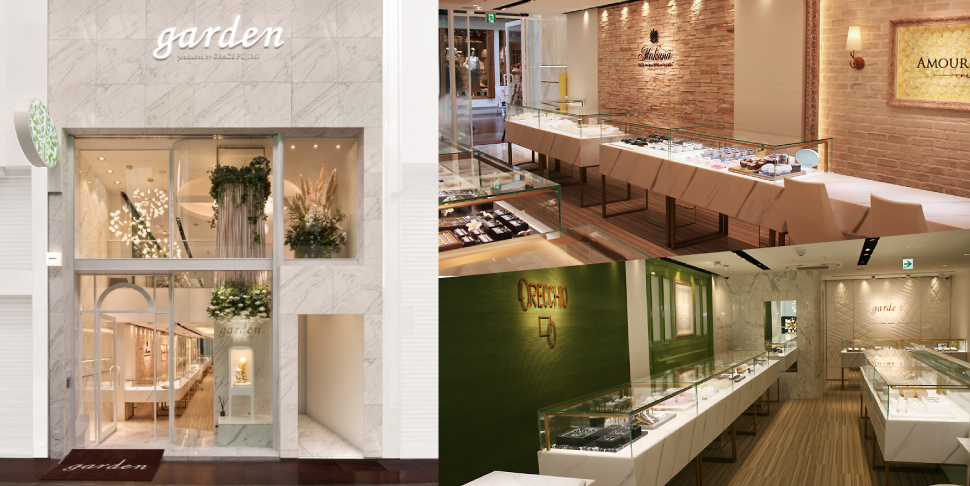
garden神戸三ノ宮
address:2-10-26 Sannomiya-cho, Chuo-ku, Kobe City, Hyogo Prefecture
TEL:078-391-5077
Opening times:11:00~20:00





